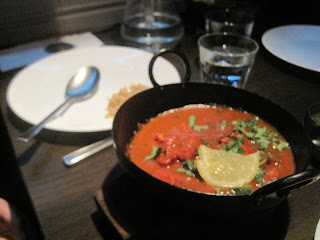Izmir, Turkey
As I told you, I have an unexplicable attraction for Turkey and I visit it as often as I have the chance to. Between 6th-12th of January I was in Izmir, due to an Erasmus Plus training course about volunteerism.
What to say - it was a nice experience: I have met interesting people there with whom I want to keep in touch; I drank salep for the first time (a drink from orchid turbes flour), I saw the paper marbling procedure live, tried Turkish coffe with Turkish delight, visited Agora, and participated to the course :P.
Drinking salep
Tasting some Turkish coffee
Jetmir (a great architect-to-be), me (the film-maker) and Tarik (a very clever mathematician) - the best team, hehe
Hi from the top!
Me, Gülşen (she is a clever engineer-to-be and she will be soon in the UK, yeyyy) and Tarik :P
Victoria and Tarik playing cool in the Izmir Market :P
Paper marbling / Ibru painiting
....and this was the project, but let's go a bit into history as I love to share with you some interesting parts of the past of this beautiful land. The name of the city comes from the Greek name 'Smyrna' (Σμύρνη) which in Turkish would become Izmir. The legend says that an Amazon lady caled Smyrna seduced Thezeus and he named the city 'Smyrna' in her honour.
The history of the place goes back to the 7th millenium BC, under the mid-Chalcolitic Age (the Copper Age) and Neolithic (The New Stone Age). There are still archeologic excavations in Izmir and around the area, as the place reveals artifacts dated back to 3000 BC and contemporary to the city of Troy.
Back then, under the Anatolian culture, there was a famous vineyard and had a beer factory but in the 13th century the invasions from the Balkans destroyed the area. As I read, Izmir was ruined so many times: under the Lydian rule, when they burned and demolished parts of the city (610-600BC), then under the Persian Empire rule, when they demolished the Old Smyrna in 545 BC.
Furthermore, in 340 BC, Alexander the Gread defeted the Persians and re-built the city and in 133 BC the city was bequeathed to the Roman Empire. There were Christians (persecuted by Jews) in Smyrna and the area was one of the Seven Churches of Asia.
In 1076 AD, the city was first captured by Turkes (for the purpose of naval raids) and in 1102 it was recaptured by the Byzantine Empire; then the Crusaders took the city in 1204 AD, then became again part of the Byzantine Empire (Through Nicaean Empire). In the 14th century, the Turks (under Umur Bay rule) captured again the city, for the same purpose (to use it as naval operture), but in 1344, the crusaders took a part of the city and in the following 60 years, both Umur Bay and the Pope ruled the city.
In 1389, Smyrna was captured for the first time by the Ottomans, but in 1402 Timur (a turco-mongol conqueror) took the city and in 1415 the Ottomans recaptured it for the second time. The conflict never ends: the Greeks tried to regain the teritory (1919-1923) and finally became part of Turkey since 1923.
And this is not all, there was a plague in 1676, earthquakes (notably in 1688), a great fire in 1743 and another one in 1922 (due to the Greco-Turkish War) - all of these inconveniences ruined the city, but each time, it found a way to reborn.
(these information can be found here as reference)
ClockTower in Izmir
This is the oldest mosk in Izmir, Konak Mosque
Agora ruins (the Roman market in 4th century BC)
With Tarik
With Gulsen
Kisses and hugs,
Victoria

















Comments
Post a Comment